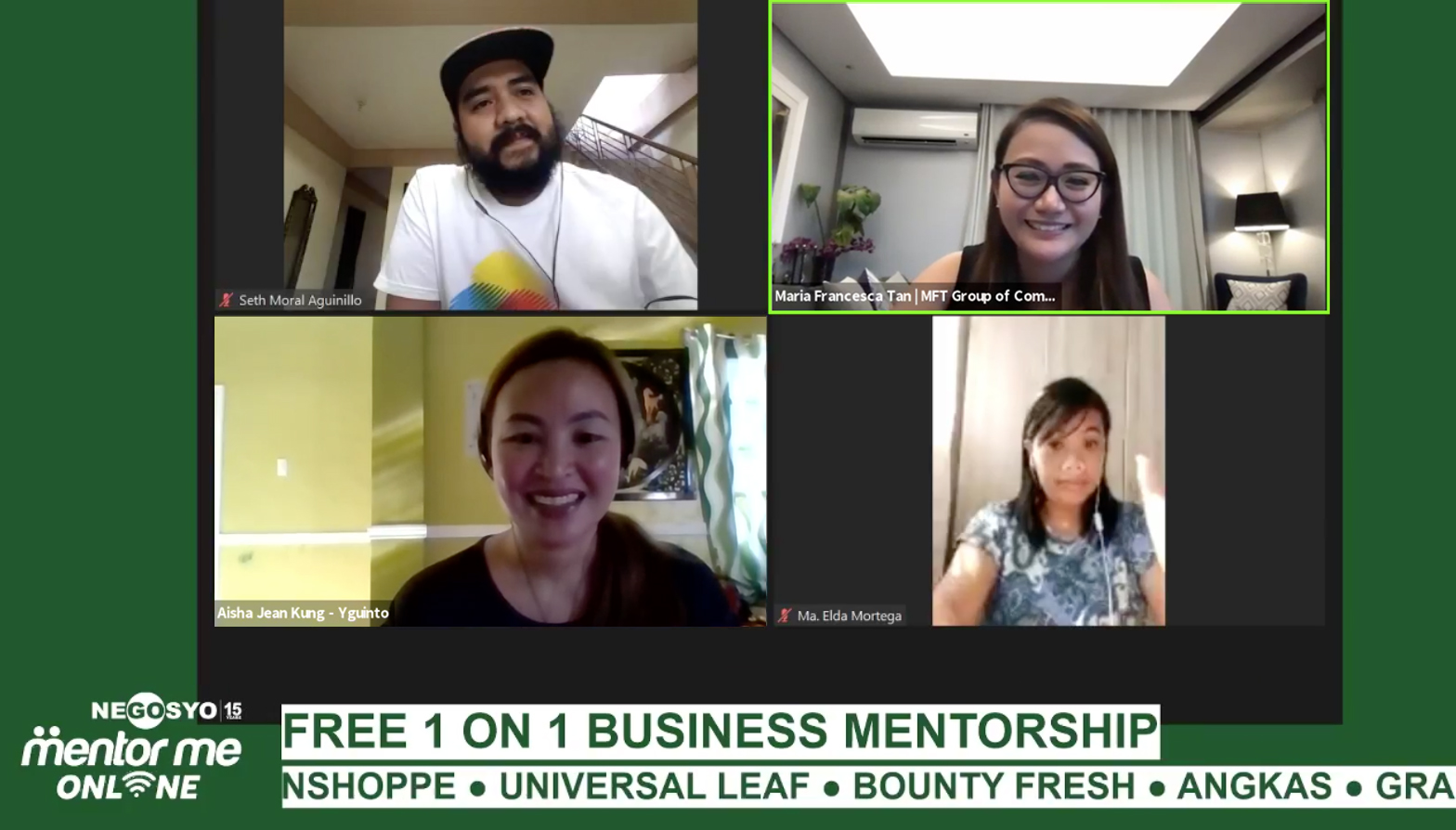
11 May MSME best practices that transcend lockdown boundaries

The quarantine measures implemented to curb the spread of the new infectious disease have affected many businesses, especially micro, small, and medium enterprises that are not involved in producing and selling essential goods and services.
For entrepreneurs like Seth, Elda, and Aisha, the common challenge that they are currently dealing with is adjusting to the seemingly changing patterns of doing business, as logistics and distribution lines remain in standstill.
During the Go Negosyo’s online mentorship segment—a campaign that serves as a marketplace of ideas and innovations from business leaders to help fellow entrepreneurs—MFT Group of Companies CEO Mica Tan shared pertinent key points on the most efficient ways that they can do to maintain traction and keep their businesses running in the time of Enhanced Community Quarantine.
Seth, who was an overseas Filipino worker for eight years, came home to open his business to sell achara or pickled fruits and vegetables in 2018. His achara business, or famously known as Lola Ciony’s House of Achara, elicited so many good feedbacks that enabled him to expand and reach 300 to 400 kilogram mark per production. Later on, he ventured in a new business and collaborated with a big packaging company to be an authorized sub-distributor of glass bottles and packaging materials in Bicol.
But, since mid-March when the lockdown started, he had to suspend his source of income because of the challenges in sourcing out raw materials. His start-up, which is engaged in bottle distribution in the region, is also not faring well because of difficulties in distribution system, which is suffering long delays lately.
For Tan, entrepreneurs must highly value preserving their liquidity and cash flow and setting and managing their profit and losses during this time. Safety protocols in distributions and how they are going to take care of their employees must also be planned out, as well as finding ways to manage the volatility in distribution channels.
It is also paramount for a newly established business to set its sales target to be able to carry out their marketing strategy.
“Identifying the marketing strategy is always dependent on your sales strategy,” she said. “When you have your sales strategy there, you know your numbers, you know your target, you know how much you can sell, how fast, that’s when you can identify your marketing strategy.”
On the other hand, Elda, a teacher and a micro entrepreneur, is planning to enter food service by selling goodies that she bakes from her kitchen in her spare time. She targets to grow her small business and hit P20,000 in sales every month by fulfilling 100 boxes. To get there, Elda has to come up with a marketing structure that would establish her customer base.
“From time to time namimigay ako ng flyers sa neighbors ko. And then, meron din akong Facebook page. Kaso nga lang nakukulangan ako, parang hindi ko na-ma-market nang maigi,” she said.
Tan advised, as “community distribution” is on the rise, to harness social networking applications such as Viber to connect and create a virtual community where she can market her products.
“If you have friends who already like your product and they are in different community, they can be the ones selling for you in different community. I think that is something you can look into also,” she added.
Aisha, meanwhile, is into selling mobile phones and direct selling of all-network prepaid load. By building her client base, she was able to open 15 shops in various towns. Although transactions can be made online, the lag in delivery of mobile units is impeding her recruitment of prospective clients.
Tan said that entrepreneurs must put a premium in being creative to effectively communicate with their customers to foster good relationships and level their expectations as work suspensions are also affecting distributions.
“That is what businesses are doing now. Alam lahat ng tao that there will be delays. It will take a little bit longer. But as long as the customers know exactly how long and why, I think they will also understand.”
She suggested the mentee to look into her inventory and check for items that she can market or use to keep the business on track. It is also the time to develop strategies to strengthen her footing such as offering discounts, accepting down payments, or opening reservation slots for interested sub-retailers.
She also advised to invest in training her employees to improve their service quality. “Now is the time also to train your staff, your employees, with the skills they need to service the customers better. It’s a good time to check on your community. Talk to them. Talk to them what do they need kasi you might discover a product na baka hindi mo hawak ngayon na pwede mo ibenta.”
“Now is the time for your creative juices to come out and (figure out) how you can still bring your service to their home without setting up for the actual event,” said Tan.
Link to the mentorship sessions:
https://www.facebook.com/gonegosyoofficial/videos/594863814476958/
https://www.facebook.com/gonegosyoofficial/videos/2334113000215087/
https://www.facebook.com/gonegosyoofficial/videos/614358185827071/
